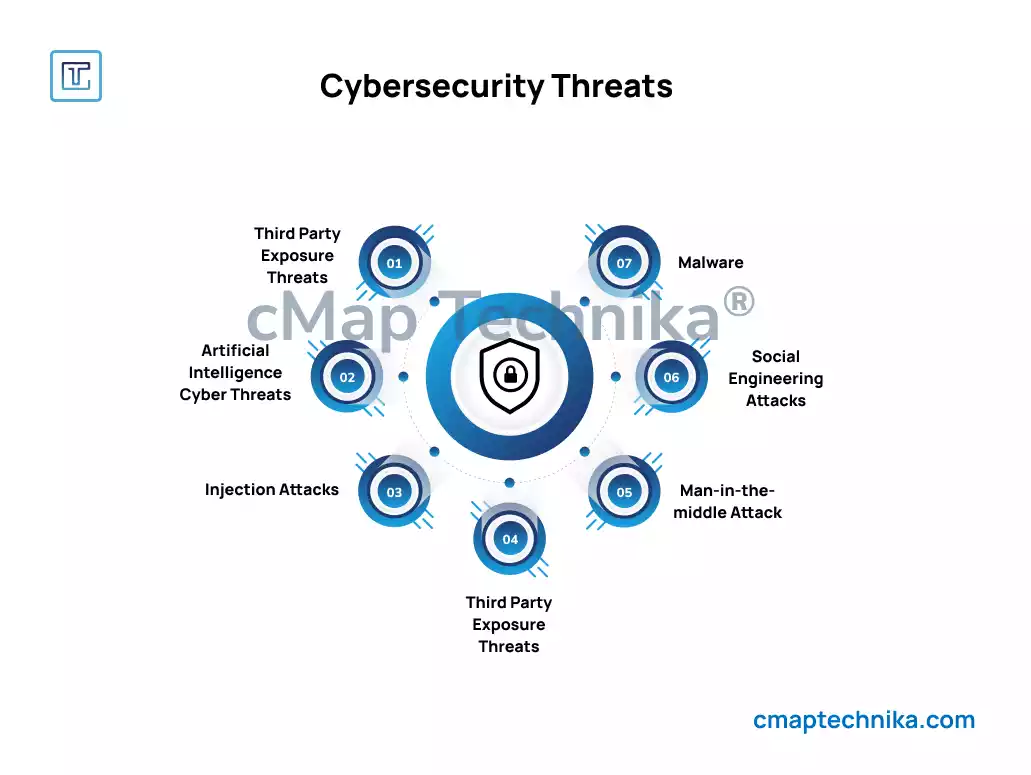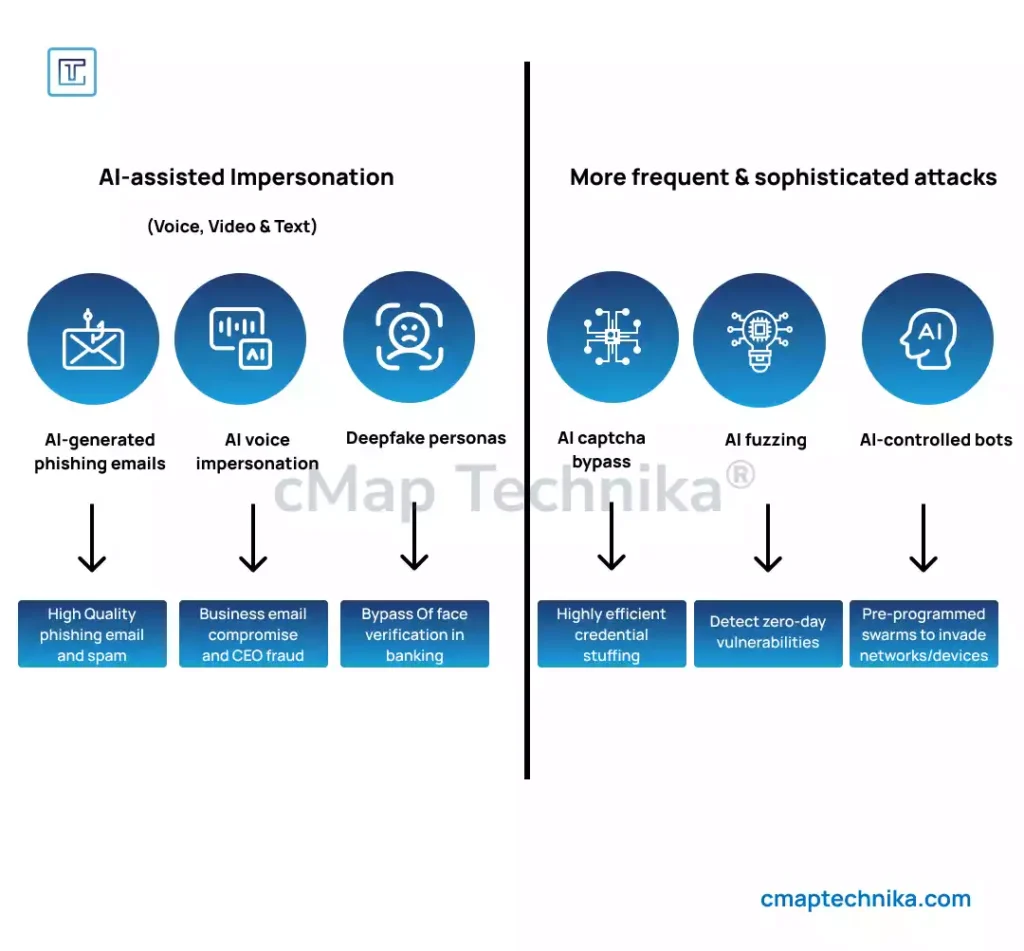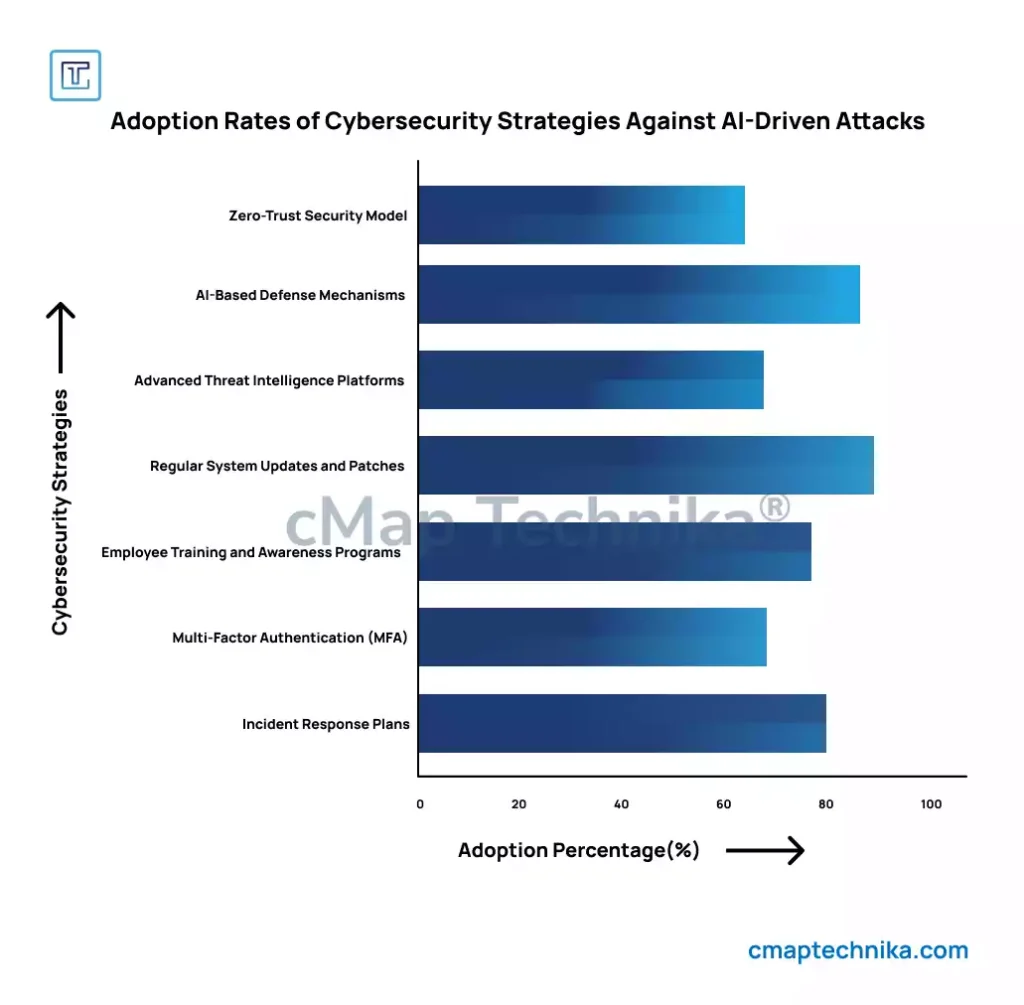As artificial intelligence (AI) continues to revolutionize industries, its applications in cybersecurity are becoming increasingly sophisticated. While AI has undoubtedly improved defense mechanisms, it has also given rise to a new breed of cyber threats—AI-driven attacks. These attacks are more dynamic, adaptive, and capable of bypassing traditional security measures, making them a growing concern for businesses and individuals alike.
At WaltCorp, we understand the importance of staying ahead of emerging threats, which is why we continuously monitor the evolving landscape of AI-powered cyber risks. In this article, we’ll explore the rise of AI-driven cyber attacks, the growing risks they pose, and how organizations can prepare to defend against them.
The Growing Threat of AI-Driven Cyber Attacks

AI is transforming the way cybercriminals operate. With the ability to automate and optimize their strategies, AI-powered attacks are becoming more efficient and harder to detect. Cybercriminals can use machine learning (ML) algorithms to predict weaknesses in systems, identify vulnerabilities, and tailor attacks to specific targets, making them more effective than traditional attacks.
For example, AI can be used to create deepfake videos, voice mimicking, and even personalized phishing emails that are nearly indistinguishable from legitimate communications. By leveraging AI, attackers can scale these attacks quickly, targeting thousands of individuals or organizations at once with a high degree of accuracy.
Furthermore, AI can be used to automate the process of exploring and exploiting system vulnerabilities. This means that cybercriminals no longer need to manually search for weaknesses; AI can do it for them, and at a much faster rate. As AI becomes more accessible, even less sophisticated attackers can launch powerful and targeted attacks.
The Risks and Impact of AI-Powered Cyber Attacks

The risks of AI-driven cyber attacks are vast, ranging from financial losses to reputational damage and even regulatory consequences. Here are some of the most concerning implications of these emerging threats:
- Automated and Adaptive Attacks: AI allows cybercriminals to automate attacks, meaning they can target organizations at a scale and speed that was previously impossible. These attacks can adapt to defensive measures in real-time, making them difficult to stop once they’re underway.
- Increased Sophistication of Phishing and Social Engineering: AI-driven attacks enable cybercriminals to craft more convincing phishing emails, voice messages, and even deepfake videos that can deceive employees into revealing sensitive information. These attacks can be highly targeted, exploiting individual behavioral patterns to increase their chances of success.
- Bypassing Traditional Security Measures: Many traditional security systems rely on signatures and rules to identify threats. However, AI-driven attacks can learn how to avoid detection by altering their behavior or changing tactics, rendering conventional defenses less effective.
- Targeted and Precision-Based Attacks: AI can analyze vast amounts of data to identify high-value targets within an organization. This means that attackers can launch precision strikes against specific individuals or departments, increasing the likelihood of successful exploitation.
- Ransomware with AI Capabilities: AI can be used to optimize ransomware attacks by identifying the most vulnerable systems and ensuring that the ransom demands are tailored to the victim’s specific situation. This makes it more likely that the attack will result in a payout for the attacker.
How to Counter AI-Driven Cyber Attacks

Given the growing sophistication of AI-driven cyber threats, organizations must adopt a proactive and multi-layered approach to cybersecurity. Here are some key strategies to effectively counter AI-powered attacks:
- Implement Advanced AI-Based Defense Mechanisms: Just as attackers use AI, organizations can deploy AI-driven security tools that use machine learning to detect and prevent attacks in real-time. These systems can identify anomalies, recognize patterns indicative of an attack, and respond faster than traditional methods. AI can also be used for automated patch management, reducing the window of opportunity for attackers to exploit vulnerabilities.
- Adopt a Zero-Trust Security Model: A zero-trust approach assumes that no user or device, inside or outside the organization, should be automatically trusted. By continuously verifying every user’s identity and ensuring they only have access to the data and systems they need, organizations can mitigate the risk of AI-driven attacks from compromised insiders or external threats.
- Enhance Threat Intelligence and Monitoring: Organizations must invest in advanced threat intelligence platforms that use AI to monitor and analyze potential threats continuously. These platforms can provide insights into emerging attack patterns, enabling security teams to stay ahead of attackers. Real-time monitoring is crucial to detect unusual activity, allowing for quick intervention before damage is done.
- Regularly Update and Patch Systems: AI-driven attacks often exploit vulnerabilities in outdated systems. Regularly updating and patching software is one of the simplest yet most effective ways to prevent attackers from exploiting known weaknesses. Automated patch management tools can ensure that systems are always up-to-date, reducing the chances of a successful attack.
- Strengthen Employee Training and Awareness: Phishing remains one of the most common methods for delivering AI-powered attacks. Educating employees about the dangers of phishing and social engineering, along with providing regular cybersecurity training, is essential. Simulated phishing exercises can help employees recognize suspicious emails and communications, reducing the likelihood of falling victim to a well-crafted AI attack.
- Invest in Strong Authentication Measures: Multi-factor authentication (MFA) and biometric security measures add an extra layer of protection against unauthorized access. AI can be used to bypass traditional authentication systems, but combining multiple forms of verification makes it significantly harder for attackers to compromise accounts.
- Prepare for the Worst: Incident Response Plans: Despite all precautions, no system is entirely foolproof. Organizations must have a robust incident response plan in place to quickly respond to an AI-driven attack. These plans should include clear communication channels, predefined roles and responsibilities, and an action plan to mitigate damage and restore operations swiftly.
Conclusion
AI-driven cyber attacks are a rapidly growing threat that requires organizations to rethink their approach to cybersecurity. As AI technology becomes more accessible and advanced, the risk of increasingly sophisticated attacks will continue to rise. To stay ahead of these threats, organizations must adopt AI-powered defense mechanisms, implement a zero-trust security model, and continuously educate employees on the evolving risks.
At WaltCorp, we guide organizations in fortifying their digital infrastructure against AI-driven threats, ensuring they’re prepared for the challenges ahead. By staying proactive and embracing cutting-edge cybersecurity technologies, businesses can protect themselves against the next wave of cyber attacks and continue to thrive in the digital age.






